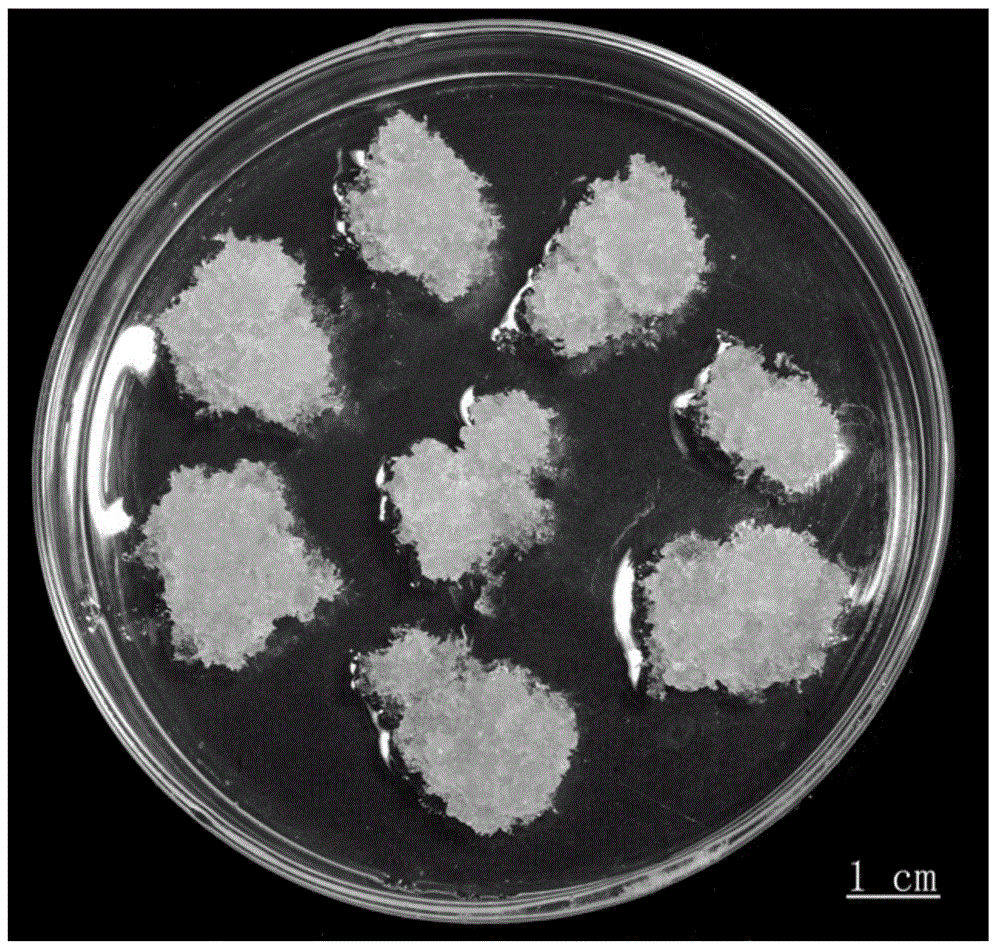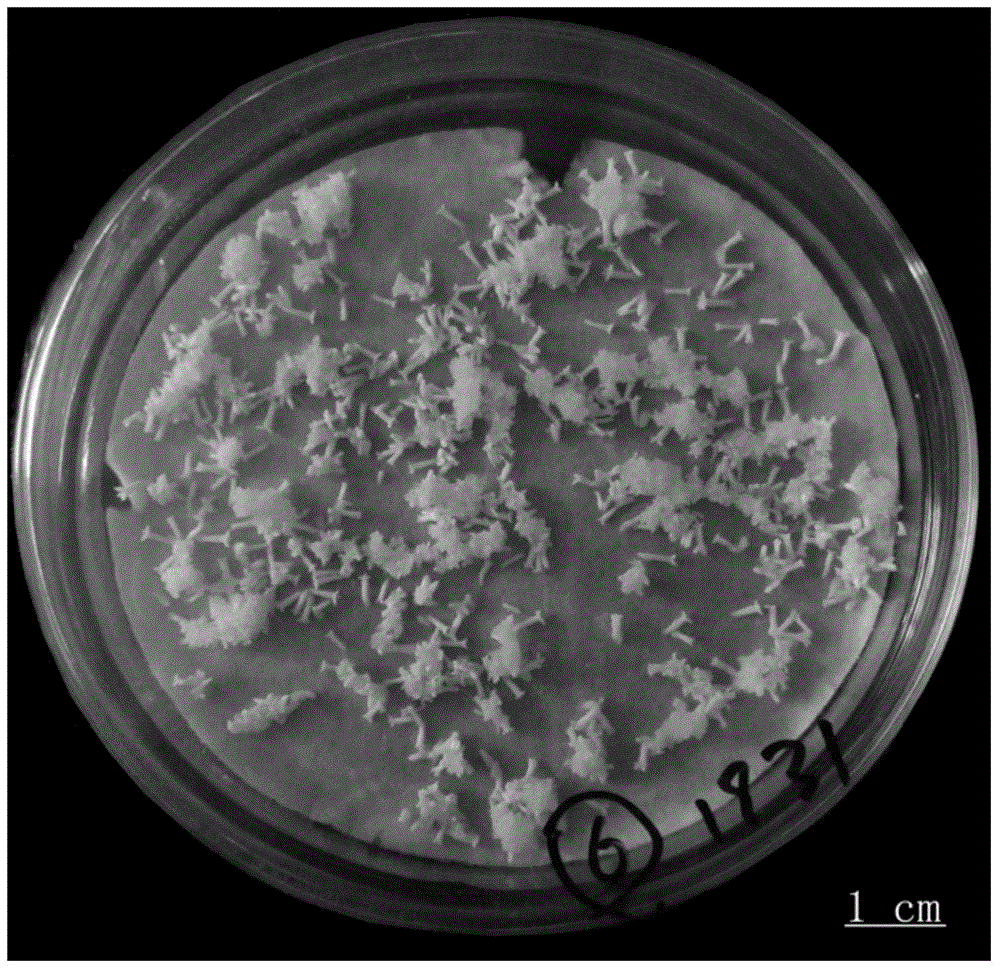Somatic Embryogenesis and Plantlet Regeneration of Picea twigs
A technology of spruce twigs and somatic embryos, applied in plant regeneration, botanical equipment and methods, horticultural methods, etc., can solve the problems of no literature reports, achieve optimization of culture conditions, realize large-scale and high-synchronization production, Effect of reducing the risk of loss of embryogenic ability
- Summary
- Abstract
- Description
- Claims
- Application Information
AI Technical Summary
Problems solved by technology
Method used
Image
Examples
Embodiment 1
[0058] Isolation of immature zygotic embryos: collect immature cones produced by free pollination around May 1, and start collecting immature cones in early June, collecting once every 7 to 10 days, a total of 15 collections, 12 genotypes , Place the harvested cones at a low temperature at 4°C. The cones were treated with absolute ethanol for 15 minutes, and washed twice with sterile water. Under sterile conditions, remove the seeds and peel off the seed coat and endosperm, and immature zygotic embryos (such as figure 1 shown) to induce embryogenic callus.
Embodiment 2
[0060] Embryogenic callus induction stage: the immature zygotic embryos obtained in Example 1 are subjected to embryogenic callus induction, using 1 / 2LM basic medium, and the concentrations of additional hormones are shown in the following table:
[0061] Processing number
2,4-D / μM
6-BA / μM
1
5
2.5
2
5
5
3
5
10
4
10
2.5
5
10
5
6
10
10
7
15
2.5
8
15
5
9
15
10
[0062] And, add 1g·L -1 The natural complex enzymatically hydrolyzes casein, the medium contains 1% sucrose, 500mg·L -1 glutamine and 0.2% plant gel (gellan gum, Sigma). Adjust the pH to 5.8 before adding the gel, and then sterilize for 20 minutes at 121° C., pressure 101 kp, high temperature, and high pressure. About 35ml of semi-solid medium is contained in a glass Petri dish with a diameter of 90mm. The culture temperature is 24±1°C, cultured in dark condition...
Embodiment 3
[0066] Embryogenic callus induction stage: The immature zygotic embryos obtained in Example 1 were subjected to embryogenic callus induction, using 1 / 2LM basic medium, and the concentrations of additional hormones were 2, 4-D10 μM and 6-BA5 μM, respectively, adding 1g·L -1 The natural complex enzymatically hydrolyzes casein, the medium contains 1% sucrose, 500mg·L -1 of glutamine and 0.2% vegetable gel. Before adding the gel, adjust the pH to 5.8, then sterilize at 121°C, pressure 101kp, high temperature, and high pressure for 20 minutes, culture at 24±1°C, and culture in the dark until embryogenic callus is induced. Under the best collection date, the average induction rate of multiple genotypes reached over 64%.
PUM
 Login to View More
Login to View More Abstract
Description
Claims
Application Information
 Login to View More
Login to View More - R&D
- Intellectual Property
- Life Sciences
- Materials
- Tech Scout
- Unparalleled Data Quality
- Higher Quality Content
- 60% Fewer Hallucinations
Browse by: Latest US Patents, China's latest patents, Technical Efficacy Thesaurus, Application Domain, Technology Topic, Popular Technical Reports.
© 2025 PatSnap. All rights reserved.Legal|Privacy policy|Modern Slavery Act Transparency Statement|Sitemap|About US| Contact US: help@patsnap.com



